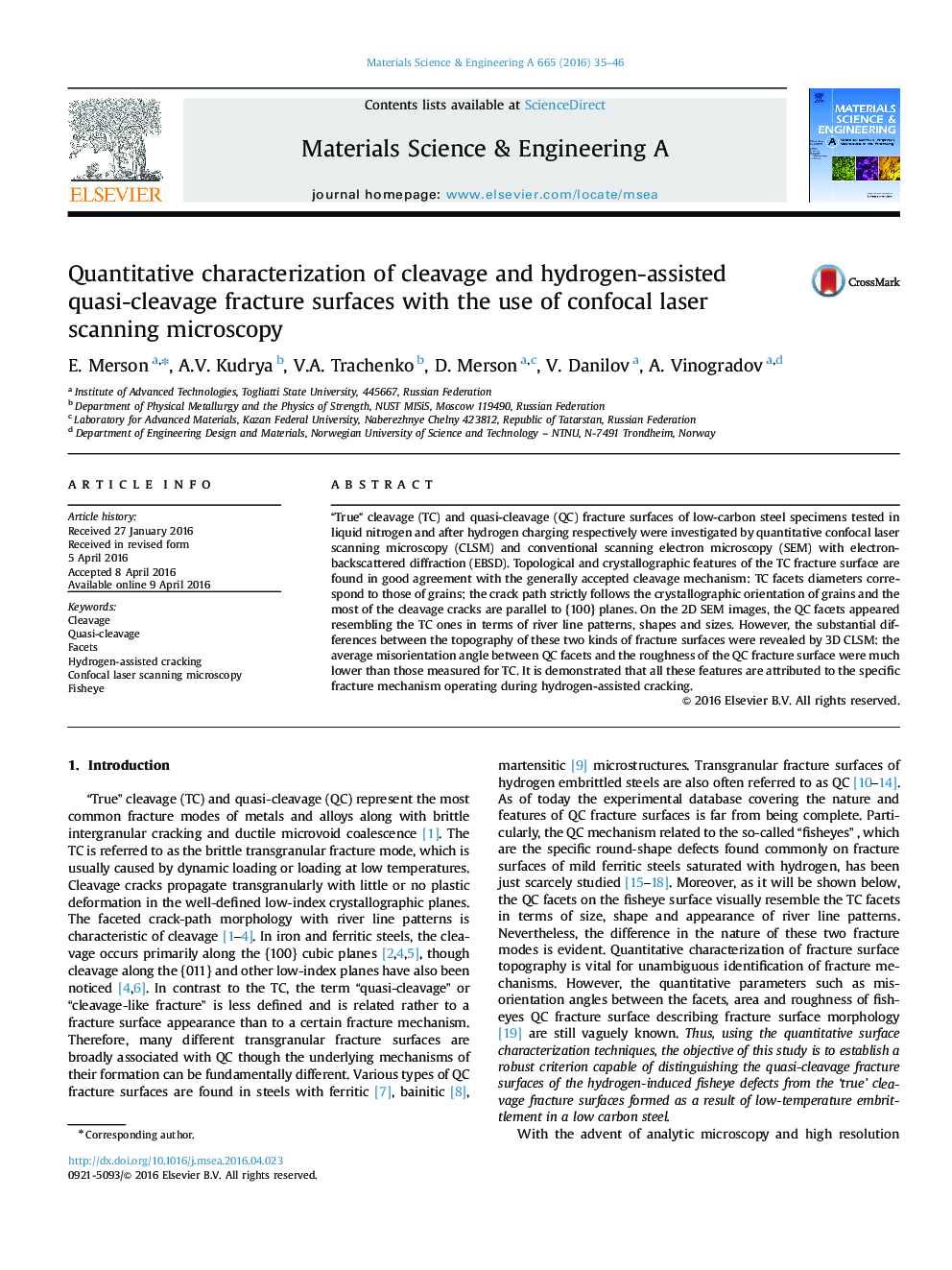| کد مقاله | کد نشریه | سال انتشار | مقاله انگلیسی | نسخه تمام متن |
|---|---|---|---|---|
| 1573225 | 1514678 | 2016 | 12 صفحه PDF | دانلود رایگان |
عنوان انگلیسی مقاله ISI
Quantitative characterization of cleavage and hydrogen-assisted quasi-cleavage fracture surfaces with the use of confocal laser scanning microscopy
ترجمه فارسی عنوان
خصوصیات کمی از سطوح شکستگی تقسیم و هیدروژن با استفاده از میکروسکوپ اسکن لیزر پاپوکال
دانلود مقاله + سفارش ترجمه
دانلود مقاله ISI انگلیسی
رایگان برای ایرانیان
کلمات کلیدی
موضوعات مرتبط
مهندسی و علوم پایه
مهندسی مواد
دانش مواد (عمومی)
چکیده انگلیسی
“True” cleavage (TC) and quasi-cleavage (QC) fracture surfaces of low-carbon steel specimens tested in liquid nitrogen and after hydrogen charging respectively were investigated by quantitative confocal laser scanning microscopy (CLSM) and conventional scanning electron microscopy (SEM) with electron-backscattered diffraction (EBSD). Topological and crystallographic features of the TC fracture surface are found in good agreement with the generally accepted cleavage mechanism: TC facets diameters correspond to those of grains; the crack path strictly follows the crystallographic orientation of grains and the most of the cleavage cracks are parallel to {100} planes. On the 2D SEM images, the QC facets appeared resembling the TC ones in terms of river line patterns, shapes and sizes. However, the substantial differences between the topography of these two kinds of fracture surfaces were revealed by 3D CLSM: the average misorientation angle between QC facets and the roughness of the QC fracture surface were much lower than those measured for TC. It is demonstrated that all these features are attributed to the specific fracture mechanism operating during hydrogen-assisted cracking.
ناشر
Database: Elsevier - ScienceDirect (ساینس دایرکت)
Journal: Materials Science and Engineering: A - Volume 665, 17 May 2016, Pages 35-46
Journal: Materials Science and Engineering: A - Volume 665, 17 May 2016, Pages 35-46
نویسندگان
E. Merson, A.V. Kudrya, V.A. Trachenko, D. Merson, V. Danilov, A. Vinogradov,
